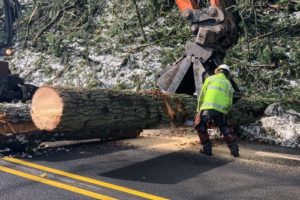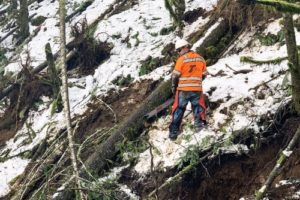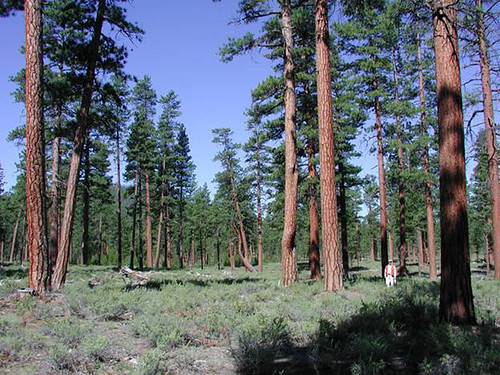The Oregon Department of Transportation is approaching the end of a multi-year environmental and public relations ordeal in which a seemingly routine herbicide-spraying project in a national forest poisoned 2,300 towering Ponderosa pine trees that eventually had to be cut down.
By June, the agency should be grinding down the last of the stumps left by its massive 2019 logging of herbicide-poisoned trees along U.S. 20 in the Deschutes National Forest in Central Oregon.

Aside from the wood chips, what will remain are valuable environmental lessons the Oregon DOT is taking to heart.
The problem began when the Oregon DOT contracted with Jefferson County Public Works in 2013 to spray the herbicide aminocyclopyrachlor – also known as Perspective – along a 12-mile stretch of U.S. 20 to kill vegetation that could pose a fire hazard.
In 2014, U.S. Forest Service rangers noticed some trees were stressed, but no one linked it to the herbicide until the spraying was completed in 2015. By then, the damage was done and the Oregon DOT determined the trees – some of which were 36 inches in diameter – were safety hazards and had to be removed.
Environmental groups and residents criticized the agency, its contractor and the U.S. Forest Service for using the herbicide. Although a review of the decision-making process did not fully put the blame on the Oregon DOT, “at best, it wasn’t clear,” explained Joel McCarroll, Oregon DOT’s District 10 manager.
“We took full responsibility. It was not a comfortable decision, but I felt it was an easy decision,” he emphasized. “It just didn’t make sense to lay the blame off on someone else. It was just easier to go forward and get this done.”

To that end, the agency held open houses for public discussion of its remediation plan because “we needed to be transparent with the public – we had more than 2,000 trees that had to come down,” McCarroll noted. “We were very clear about the criteria and the process we were using. And, people were fine. I’ve had people come unglued on me for other things at public meetings, but these crowds were respectful.”
Although Perspective was legal to use, a warning label about its use around pine trees was added before the project ended, but no one caught the change. “We overlooked a warning label, and that’s one of the process-improvement changes we’ve made,” McCarroll said.
In response to the tree killing, Oregon became the first state to prohibit the use of aminocyclopyrachlor in numerous applications on May 9, including along rights-of-way. Additionally, each Oregon DOT district now has an integrated vegetation program, and personnel within the district are cross trained to prevent a loss of institutional knowledge, McCarroll noted.
“Learn from our experience – you still have to have the expertise internally, even if you’re contracting out spraying,” he explained. “If you’re dealing with highways that are on federal lands, make sure the decision-making is clear. And it’s important to be public about your process.”

